Learn how to propagate string of hearts. We share with you the methods we prefer for best success. String of hearts propagation is easy if properly done. Buy one and grow more of this vine over time.
Lots of methods can be used for propagating string of hearts. We go over them below. At the bottom of this post we have a printable how to card for our favorite methods.
It also has a video to give you a complete walkthrough of the water propagation and butterfly methods.
String of heart vine is a succulent. It’s native to south Africa and can grow up or down or crawl across the ground. For more on the care of the string of hearts be sure to read our String of Heart Care Guide.
These vines grow in nature in several ways. We can also use these methods to make new vines from this plant. However, seed propagation and leaf cutting take a very long time and are not usually worthwhile for plant hobbyists.
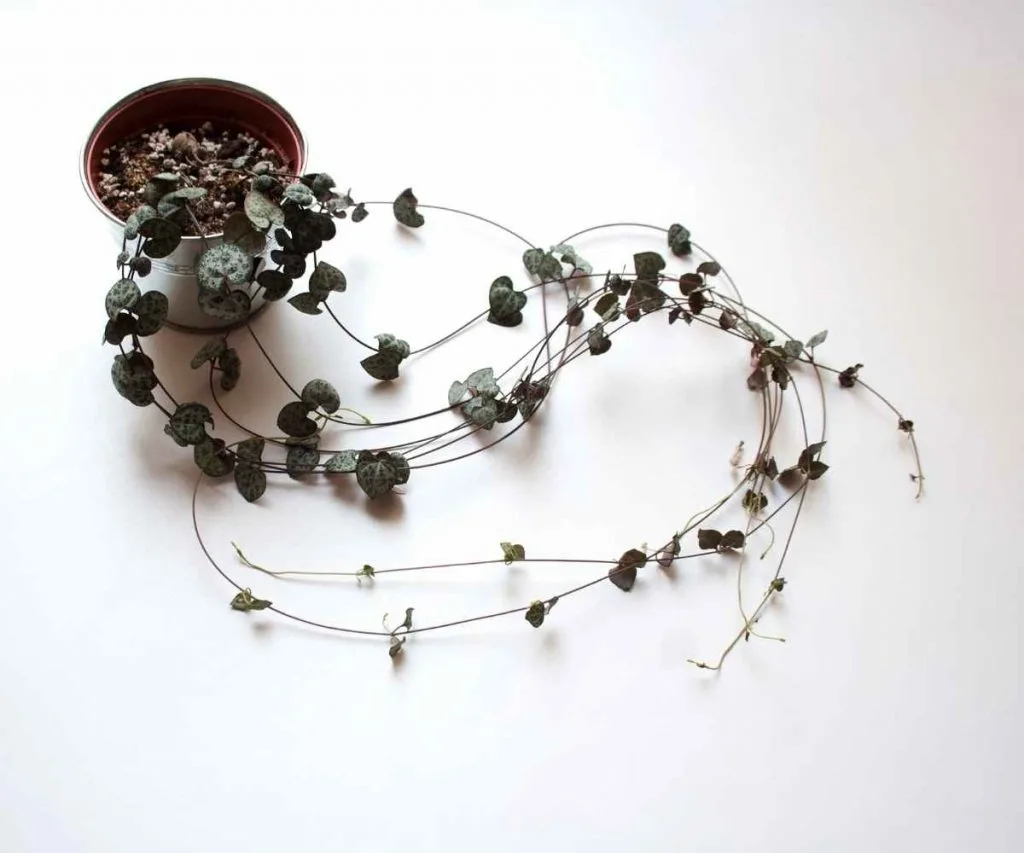
Chain of hearts grows from it’s leaf attachment points, vine cuttings, leaf cuttings, tubers and seeds.
String of Hearts Propagation-Water propagation:
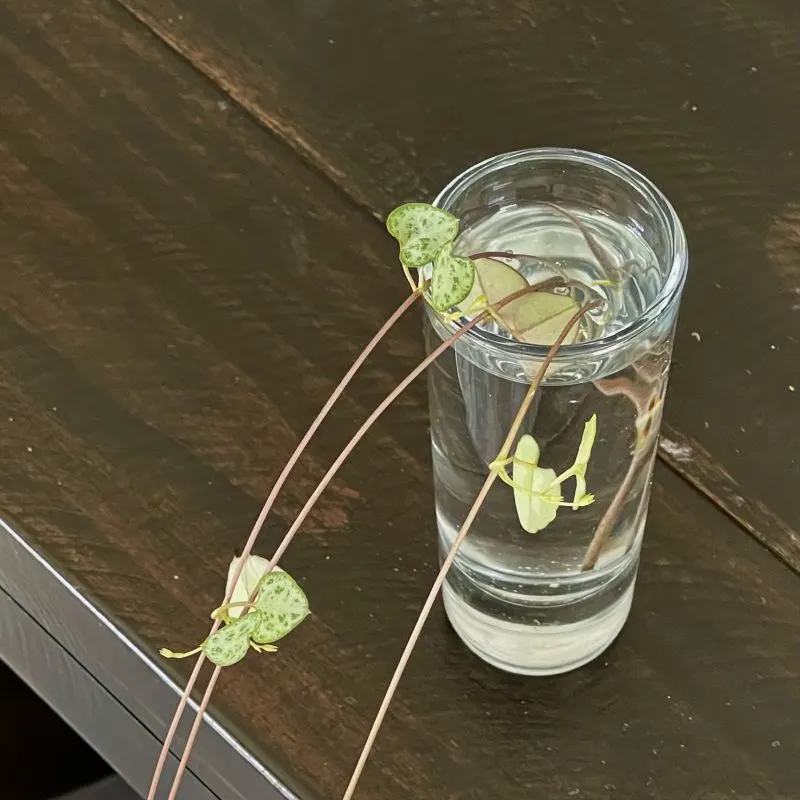
This is a very simple way to propagate a vine. I use this method for Propagating Pothos Vines too. It’s reliable, easy and has good results.
- Snip off a length of vine.
- Put it in a container of water. I use a clear tall shot glass. However, an opaque water container will protect the stem from light and encourage root growth. You just can’t keep an eye on it as well. 🙂
- Set it in a window and wait for roots to form and grow an inch or two before planting the new roots in soil. This can take several months. Best to try it during the growing season.
Looking for information on the Variegated String of Hearts?
The Contented Plant
Seed Propagation:
The rosary vine grows flowers. If they are pollinated the flowers will harden into seed pods, form seeds and open to allow the seed to fly away in the wind to grow more Ceropegia woodii. At least that is how it is done in the wild.
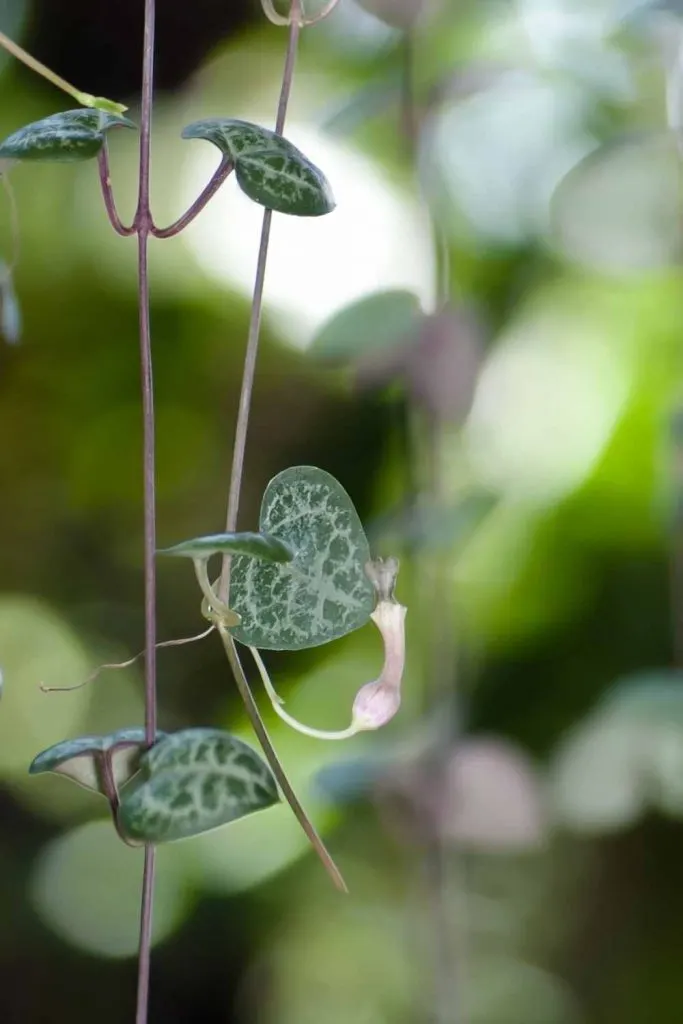
If you take the seeds from your seed pods at maturity you can plant them in small seedling pellets. They can then be transferred to one inch pots to grow into a string of heart vine.
But this will take a long time and lots of nurturing, It is not the easiest method for most home plant owners.
If you are seed propagating begin during the growing season. Ceropegia woodii is dormant in winter months.
Ceropegia woodii Leaf Cutting Propagation:
Snipping off a single leaf from a chain of hearts and directly planting it in the soil may be a successful propagation. But it will take up to a year for the leaf to begin to show new growth since it has to build the entire root system.
This method is not recommended. The leaf is likely to rot in the process. Regardless, String of Hearts propagation is much simpler and quicker with other methods.
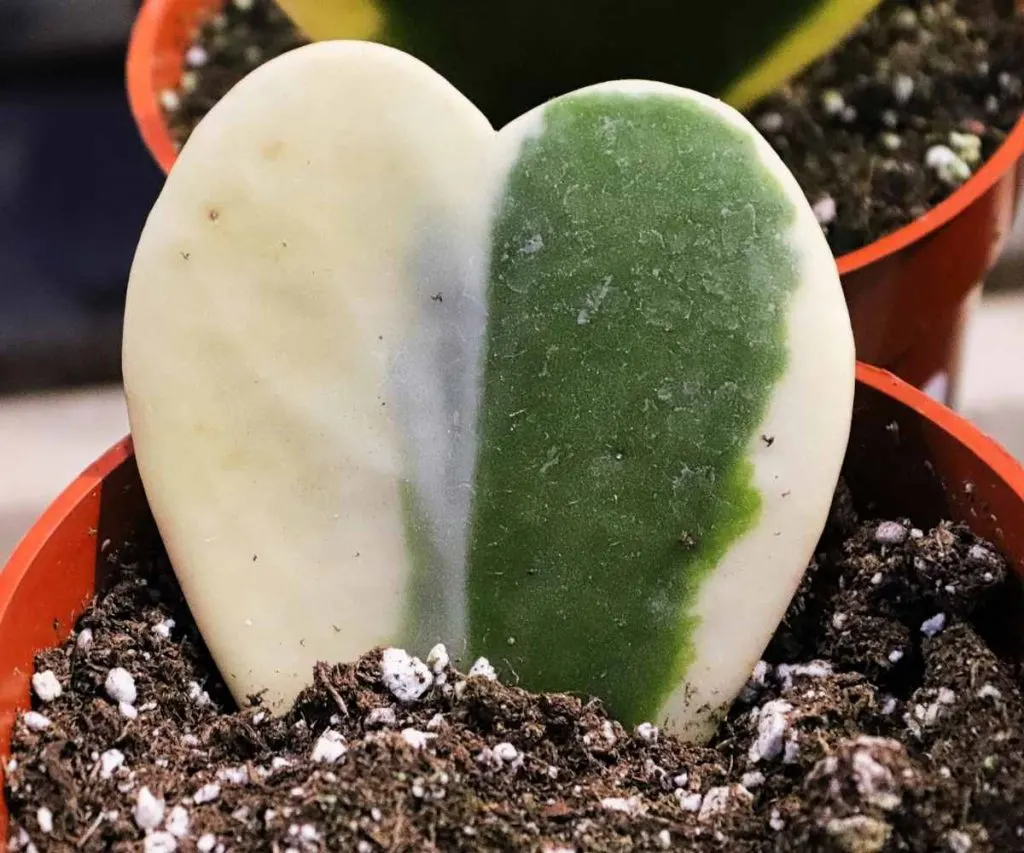
String of Hearts propagation-Soil:
Like many vines, String of hearts grows roots and tubers from the leaf attachment sites. Planting these vines directly in soil is a simple and successful method of making new Rosary vines.
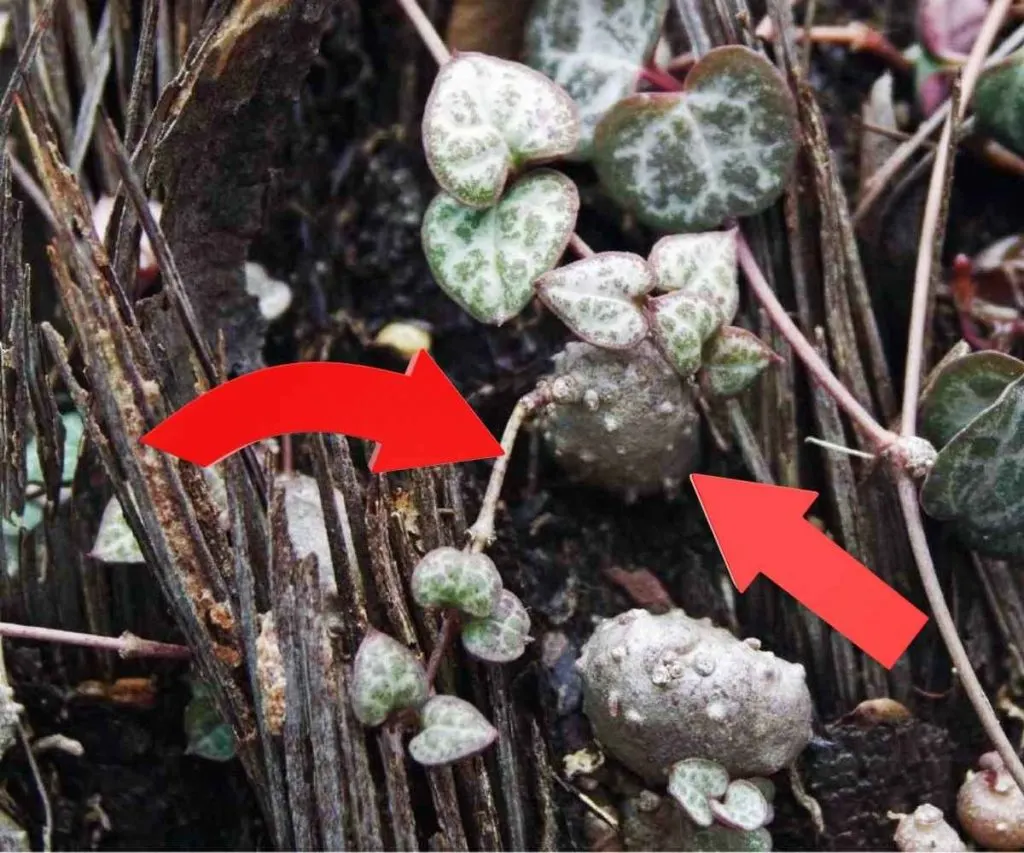
Soil propagation can be done several ways:
- When your chain of hearts grows really long and you want to shorten it you can cut off the extra length and plant the bulb shaped tubers at the base of the leaves directly into the moist soil in its own pot (the tubers are pictured above). Cover the pot to create a greenhouse effect. The extra humidity and warmth will help the process.
- You can also LEAVE the strings on the mother plant and set a pot with soil under or next to the mother plant. Now wrap the ends of the strings into a circle and press the strings into the soil leaving the leaves out of the soil. Water the new pot and wait until you see signs of new growth. Now you can cut the vine anywhere you like between the mother plant and new baby pot.
- Maybe your mother plant has grown sparse on top and you want to fill the top in for a fuller plant. Lift a long string and press it into the soil around the mother rosary vine wherever you want more strings. Water them and wait. Eventually you will get new growth.
Purchase String of Hearts plant on Etsy
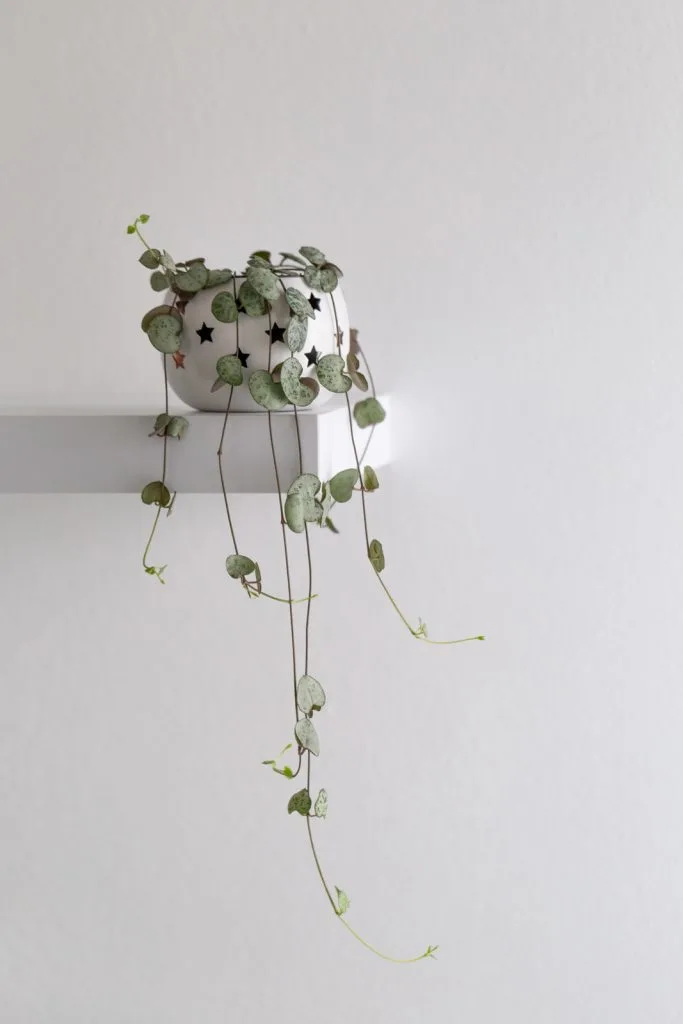
How to Propagate String Of Hearts: Butterfly, Water and Soil Method:
Here are three of the easiest methods of string of hearts propagation.
How to Propagate String of Hearts
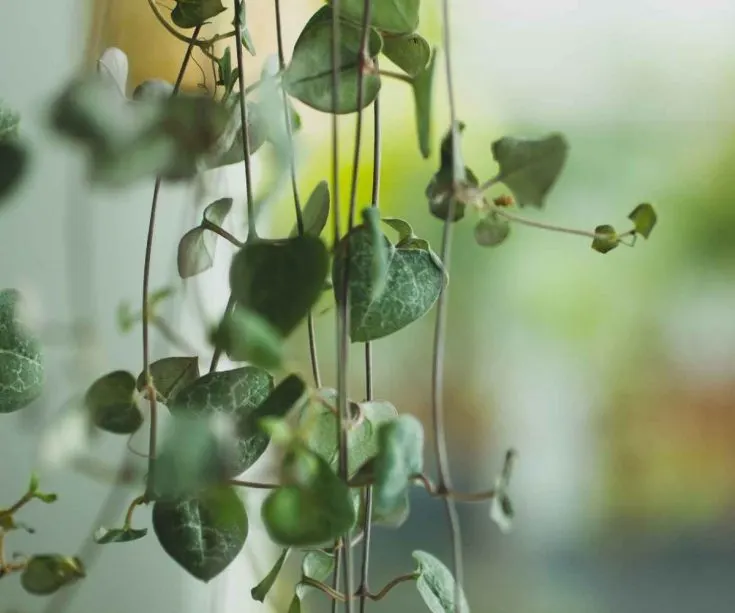
Learn how to propagate string of hearts by water, soil and moss propagation. We share with you the methods we prefer for best success in least time. String of hearts propagation is easy if properly done.
Tools
- clean sterile scissors
Instructions
Water Propagation:
- Cut a 6 to 12 inch length of vine from the mother plant.
- Set it in a container of water near a window or on a warm outdoor porch or greenhouse shelf.
- The water will need changing if it gets really warm (90 to 100 degrees F) or the water gets cloudy. Also change it out if clean every week or so.
- In about a month you should see roots beginning to grow from the cut stem end.
- When the roots are an inch to two inches long the plant is ready to plant into succulent soil in a small pot.
Soil Propagation:
- Leave the vine attached to the mother plant. Press long trailers into the soil with leaves up out of the soil. This can be done in the same pot as the mother plant or into a new pot under or beside the mom plant pot.
- Eventually the string of heart vine will develop new growth at the soil connection points. When you see the new growth from the soil you can cut off the vine from the mother vine if you wish to separate them.
Moss (or soil) Propagation (Butterfly Method):
- soak the moss in water with a few drops of super thrive.
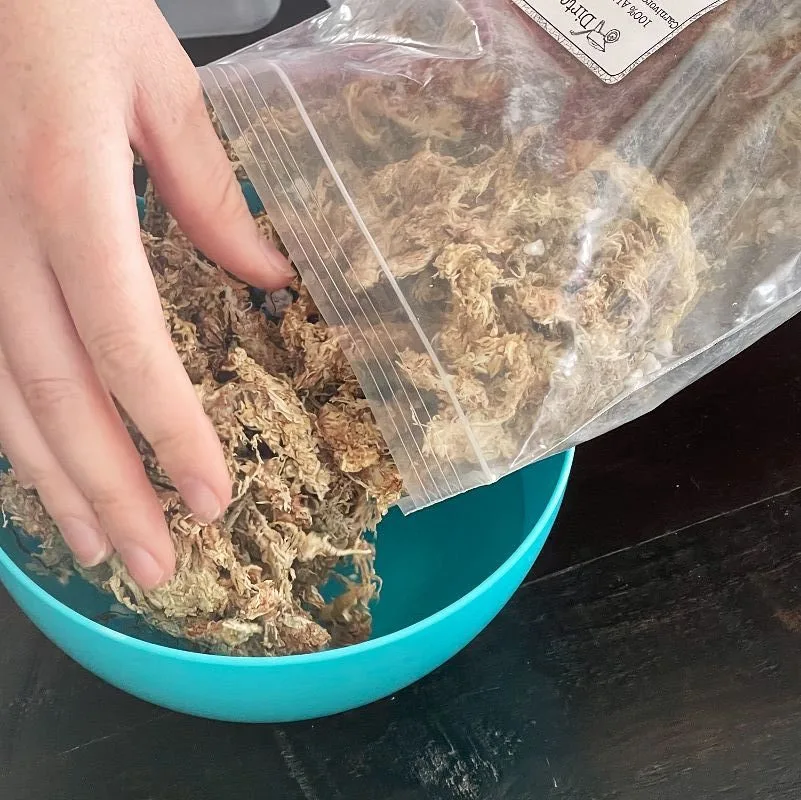
- Now squeeze it out almost dry. The moss should be light and springy.
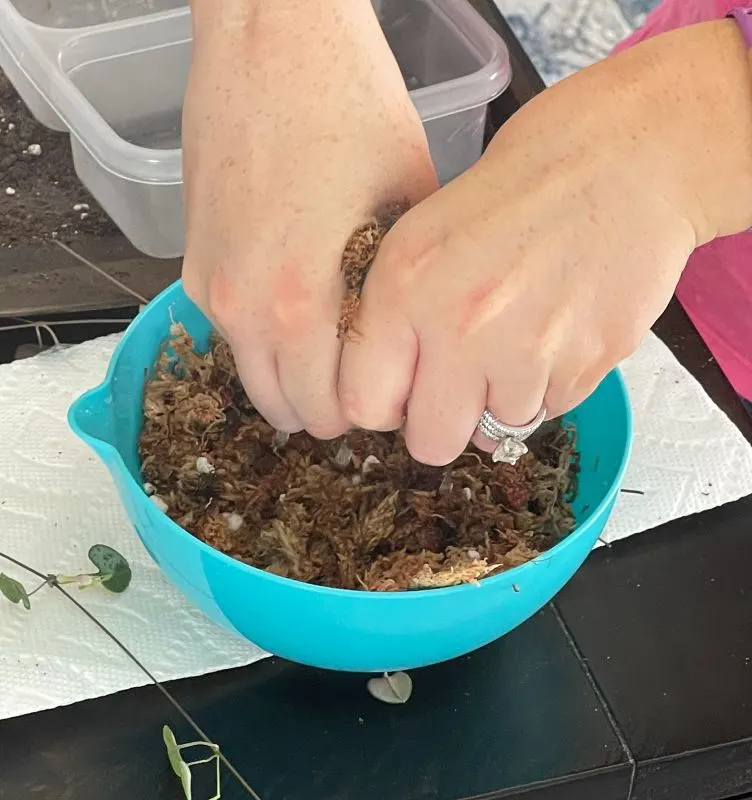
- Lay the moss into the propagation tray of your choice. I used a plastic lunch tray but I have a seed propagation tray with a lid linked above for you.
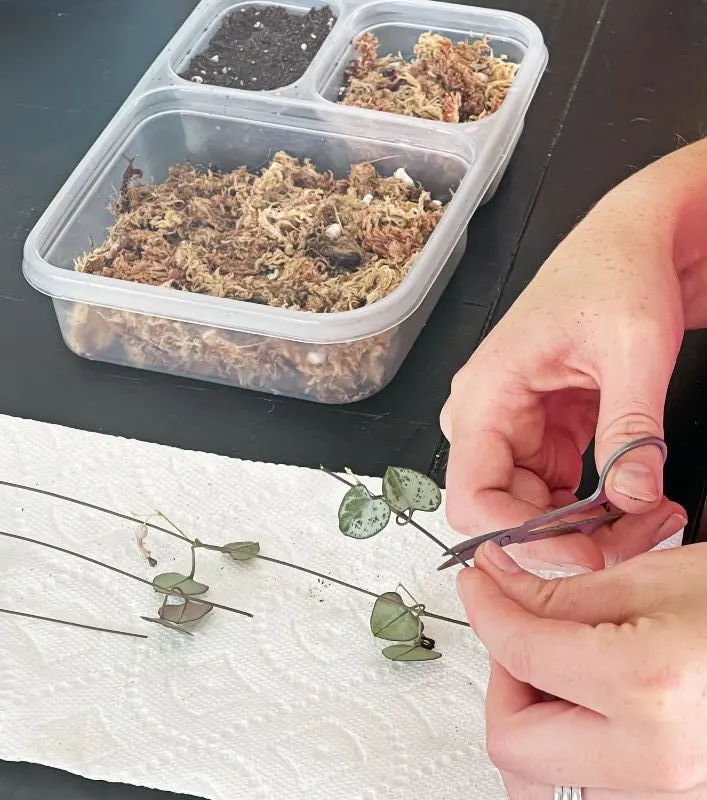
- For this method you will cut the vine twice for each propagation you want to make (watch the video for a complete demonstration of this method).
- With your sterile scissors cut IN BETWEEN a set of two leaves on your vine. Now go to the OTHER side of the leaf set and cut the vine again. You will be left with a set of two leaves at the same place on the vine resembling a butterfly shape. On each side of the butterfly leaf set will be a small vine.
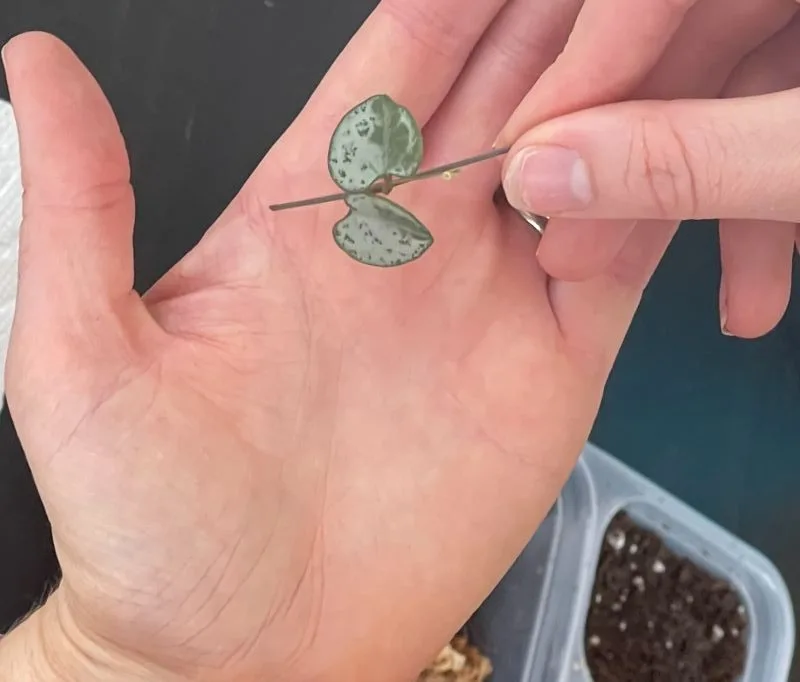
- Lay the leaf on the moist moss (or moist soil). Press the vine ends into the substrate until just the leaves show above it.
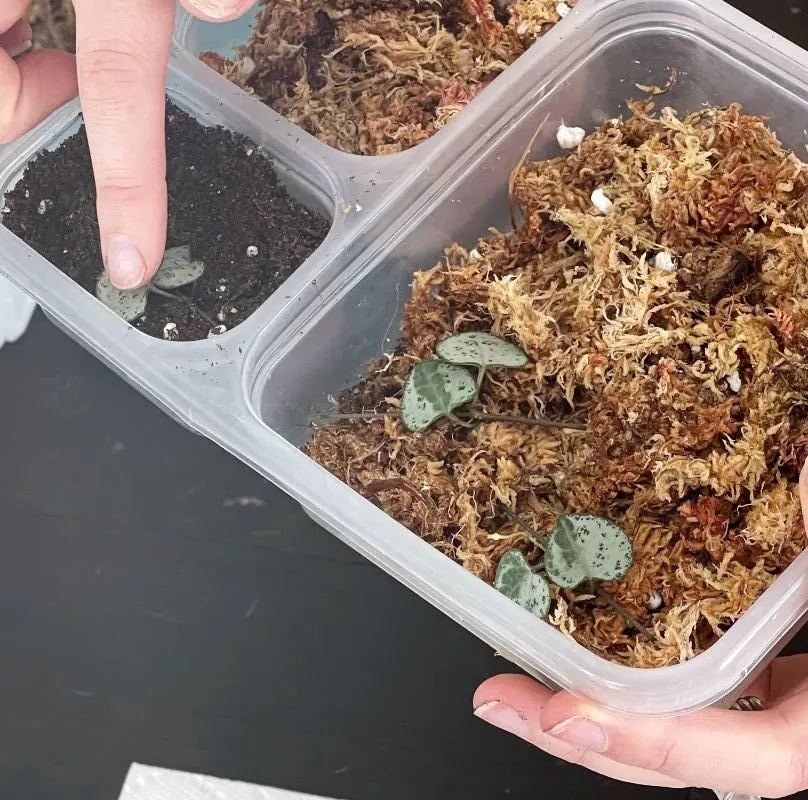
- Cover the propagation container ( I used a plastic bag) to create a humid warm environment for your cuttings.
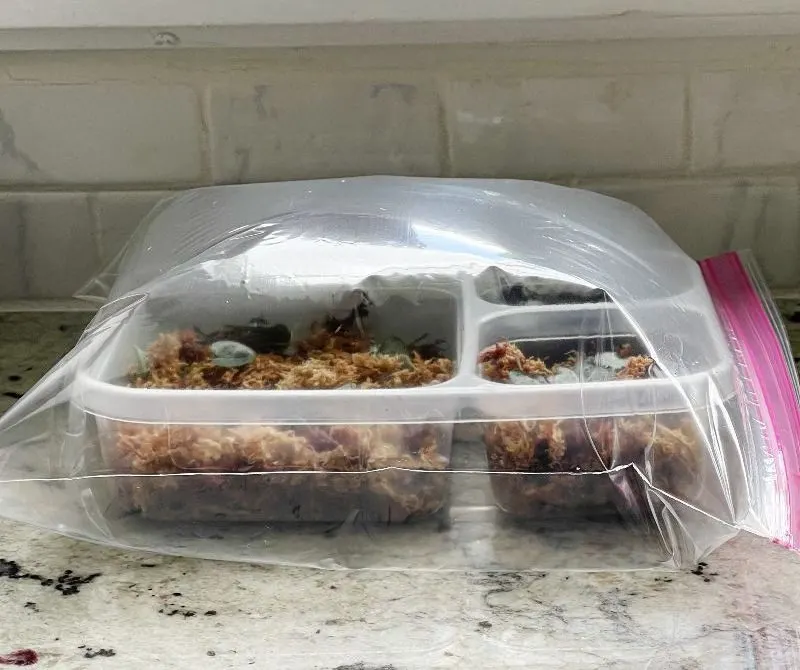
- This method can take several weeks to begin to show roots. A lot of it depends on the heat and moisture conditions.
- Once the propagations take root and begin new top growth you can plant them in soil or your preferred pot.
Notes
There are more methods of propagating string of hearts vines. These are the simplest and have good results.
The video below shows how I do the butterfly and water propagation methods.
Further Reading on this planty subject
Follow Us:
Find us on YouTube, Instagram , Pinterest and TikTok! We love to Plant chat. We also comment, like and occasionally share your content to our daily stories. We’d love to see your plants. Share your joy in your houseplants. Happy Planting!
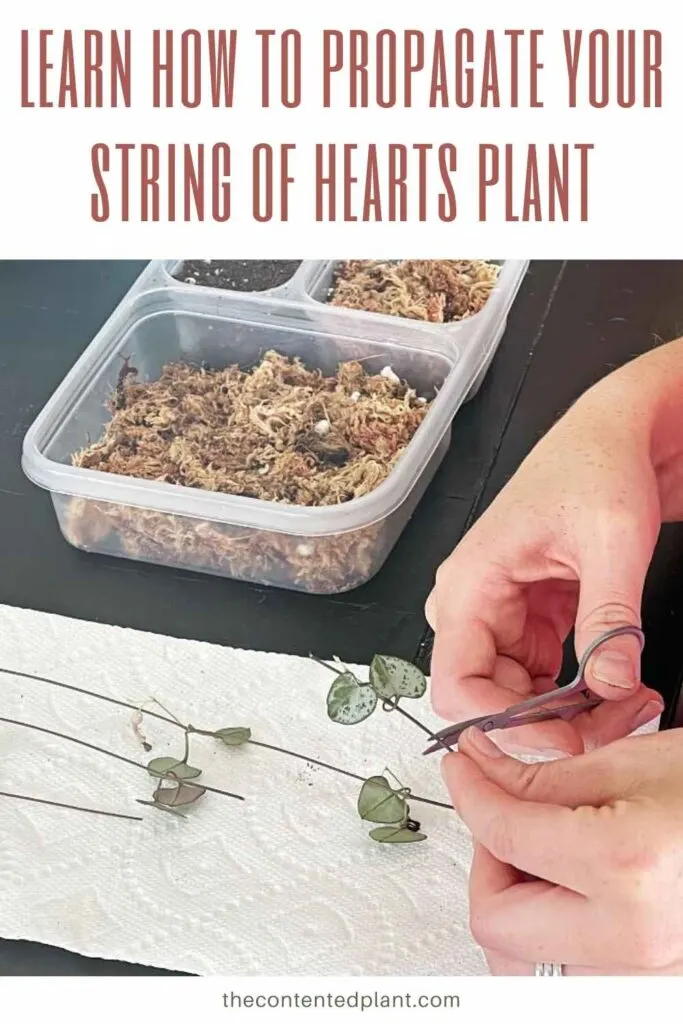

Top 12 How To Propagate String Of Hearts - EN Vik News
Thursday 4th of August 2022
[…] Quote from the source: … […]
String of Dolphins Plant Care - The Contented Plant
Tuesday 10th of May 2022
[…] for the string of Dolphins is similar to the string of hearts plant. Be sure to read our post on How to Propagate the String Of Hearts for our complete propagation guide. And watch the video below to see Kayti propagate her string of […]
String of Hearts Watering Guide - The Contented Plant
Thursday 24th of February 2022
[…] need to be careful, even when propagating string of Hearts, not to overdo the water. Or you won’t get a new plant. Just a rotted […]
String of Pearls Care Guide and Plant Profile - The Contented Plant
Tuesday 15th of February 2022
[…] for the string of pearls is similar to the string of hearts plant. Be sure to read our post on How to Propagate the String Of Hearts for more […]
String of Hearts Care Guide - The Contented Plant
Thursday 14th of October 2021
[…] The Ceropegia Woodii is easy to propagate. Learn how to propagate a string of heart in this post. […]